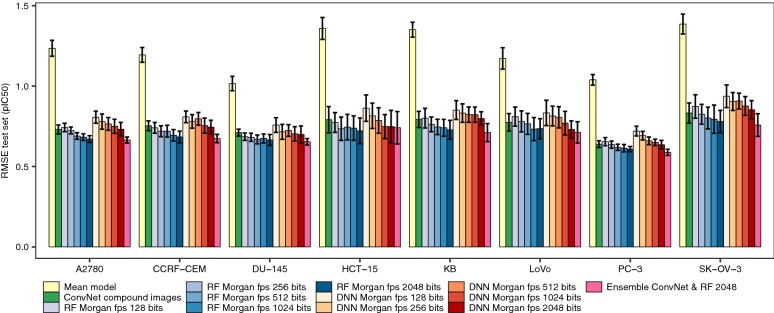Fig. 4.
Comparing the predictive power of ConvNets, DNN and RF models using 8 cytotoxicity data sets. Mean RMSE values (± standard deviation) on the test set across ten runs for (1) the ConvNet showing the highest predictive power for each data set and run combination, (2) RF models trained on Morgan fingerprints, (3) DNN trained on Morgan fingerprints, and (4) the ensemble models built by averaging the predictions generated with the RF models trained on Morgan fingerprints of 2048 bits and ConvNet models trained on compound images. The yellow bars correspond to the RMSE values that would be obtained by a model predicting the average bioactivity value in the training data for all the test set instances. Overall, it can be seen that ConvNets lead to comparable predictive power than RF and DNN models (the effect size is small and not significant, ANOVA test). On average, ensemble models displayed higher predictive power than either model alone (Eq. 2; P < 10−5), leading to 4–12% and 5–8% decrease in RMSE values with respect to RF and ConvNet models. However, the effect size is small in all cases

